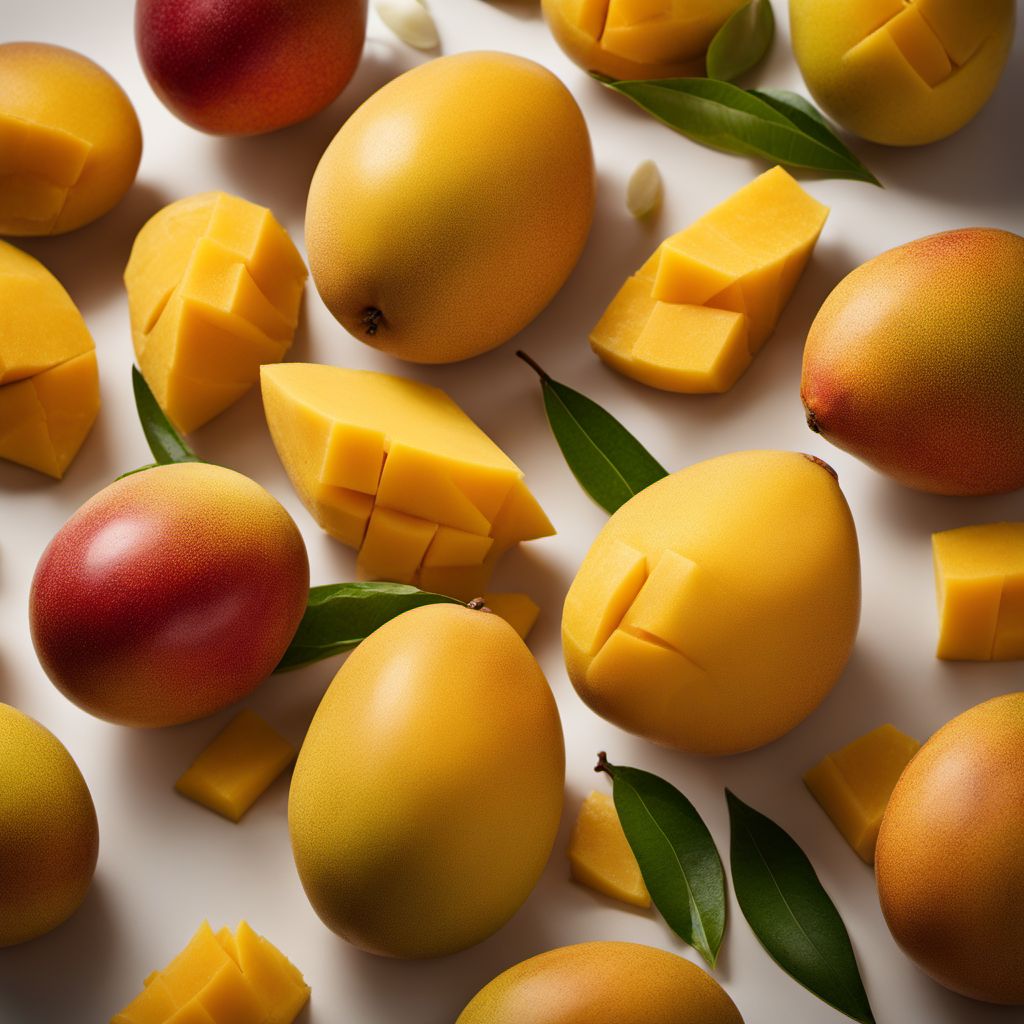
Ingredient
Mangoes and similar-
The Tropical Treasure
Mangoes and similar fruits have a soft, juicy flesh with a smooth texture and a sweet-tart flavor. They come in a variety of colors, including shades of yellow, orange, and red. Mangoes are often described as having a tropical, floral aroma that is both refreshing and enticing. They can be eaten fresh, sliced, or blended into smoothies, and are also used in salads, salsas, chutneys, desserts, and beverages.
Origins and history
Mangoes are believed to have originated in South Asia, specifically in the region that is now India and Myanmar. They have a long history of cultivation and have been enjoyed for thousands of years. Mangoes were introduced to other parts of the world through trade and exploration, and are now grown in many tropical and subtropical regions. They hold cultural significance in various countries and are often associated with summer and harvest festivals.
Nutritional information
Mangoes are a good source of vitamins A and C, as well as dietary fiber. They also contain antioxidants and other beneficial plant compounds. A medium-sized mango contains approximately 150 calories.
Allergens
Mangoes may cause allergic reactions in individuals with a sensitivity to certain fruits or latex. Some people may also experience oral allergy syndrome, which can cause itching or swelling of the lips, mouth, or throat when consuming mangoes.
How to select
When selecting mangoes, look for fruits that are firm but slightly yielding to gentle pressure. The skin should be smooth and unblemished, with no signs of wrinkling or bruising. The color of the skin will vary depending on the variety, but it should be vibrant and free from any mold or decay. Additionally, a fruity aroma near the stem end is a good indicator of ripeness.
Storage recommendations
To prolong the shelf life of mangoes, store them at room temperature until they reach the desired level of ripeness. Once ripe, they can be stored in the refrigerator for a few days to slow down the ripening process. Cut mangoes should be stored in an airtight container in the refrigerator and consumed within 2 to 3 days.
How to produce
Mango trees can be grown in tropical and subtropical regions with warm temperatures and well-drained soil. They require regular watering and protection from frost. Mangoes can be grown from seeds, but it is more common to propagate them from grafted trees to ensure consistent fruit quality. It takes several years for a mango tree to bear fruit, but with proper care, it can provide a bountiful harvest.
Preparation tips
Mangoes can be enjoyed fresh, sliced, or blended into smoothies. They are also commonly used in salads, salsas, chutneys, desserts, and beverages. Mangoes pair well with flavors such as lime, coconut, chili, and mint. When cutting a mango, be cautious of the large, flat seed in the center. There are various techniques to remove the flesh from the seed, such as slicing, dicing, or using a mango splitter.
Substitutions
Papayas, peaches, and apricots can be used as substitutes for mangoes in certain recipes. However, the flavor and texture may differ slightly. N/A
Culinary uses
Mangoes are widely used in cuisines around the world, particularly in tropical regions. They are a key ingredient in dishes such as mango sticky rice from Thailand, aamras from India, and mango salsa from Mexico. Mangoes are also used in desserts like mango mousse, sorbet, and pie. They are a versatile fruit that can be incorporated into both sweet and savory dishes.
Availability
Mangoes are commonly available in tropical and subtropical regions, including countries such as India, Mexico, Thailand, the Philippines, and Brazil. They are also imported and sold in many other countries, making them accessible to a wider audience.
